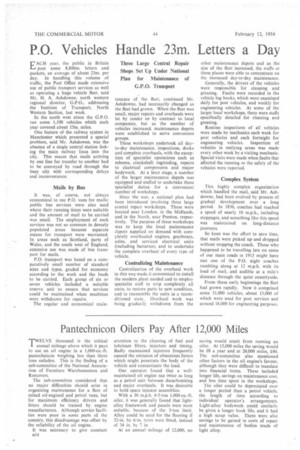Pantechnicon Oilers Pay After 12,000 Miles
Page 48

If you've noticed an error in this article please click here to report it so we can fix it.
TWELVE thousand is the critical 1 annual mileage above which it pays to use an oil engine in a 1,000-cu.-ft. pantechnicon weighing less than three tons unladen. This is the finding of a sub-committee of the National Association of Furniture Warehousemen and Removers.
The sub-committee considered that no major difficulties should arise in organizing maintenance for a fleet of mixed oil-engined and petrol vans, but for maximum efficiency drivers and fitters should be trained by engine manufacturers. Although service facilities were poor in some parts of the country, this disadvantage was offset by the reliability of the oil engine.
It was necessary to give constant B14 attention to the cleaning of fuel and lubricant filters, injectors and timing. Badly maintained injectors frequently caused the emission of obnoxious fumes which might penetrate the body of the vehicle and contaminate the load.
One operator found that a wellmaintained oil engine ran twice as long as a petrol unit between decarbonizing and major overhauls. It was desirable to hold spare injector assemblies.
With a 30 m.p.h. 4-5-ton 1,000-cu.-ft. oiler, it was generally found that lightalloy framework and panels were most suitable, because of the 3-ton limit. Alloy could be used for the flooring if 32-in. by 6-in. tyres were fitted, instead of 34 in. by 7 in.
At an annual mileage of 12,000, no saving would result from running an oiler. At 15,000 miles the saving would be £8 a year and at 20,000 miles, £40. The sub-committee also mentioned other factors in the oil engine's favour, although they were difficult to translate into financial terms. These included longer life, savings on maintenance cost, and less time spent in the workshops.
The oiler could be depreciated over a longer period than a petrol vehicle, the length of time according to individual operator's arrangements. Light-alloy bodywork could similarly be given a longer book life, and it had a high scrap value. There were also savings to be gained in costs of repair and maintenance of bodies made of light alloy.




































































































